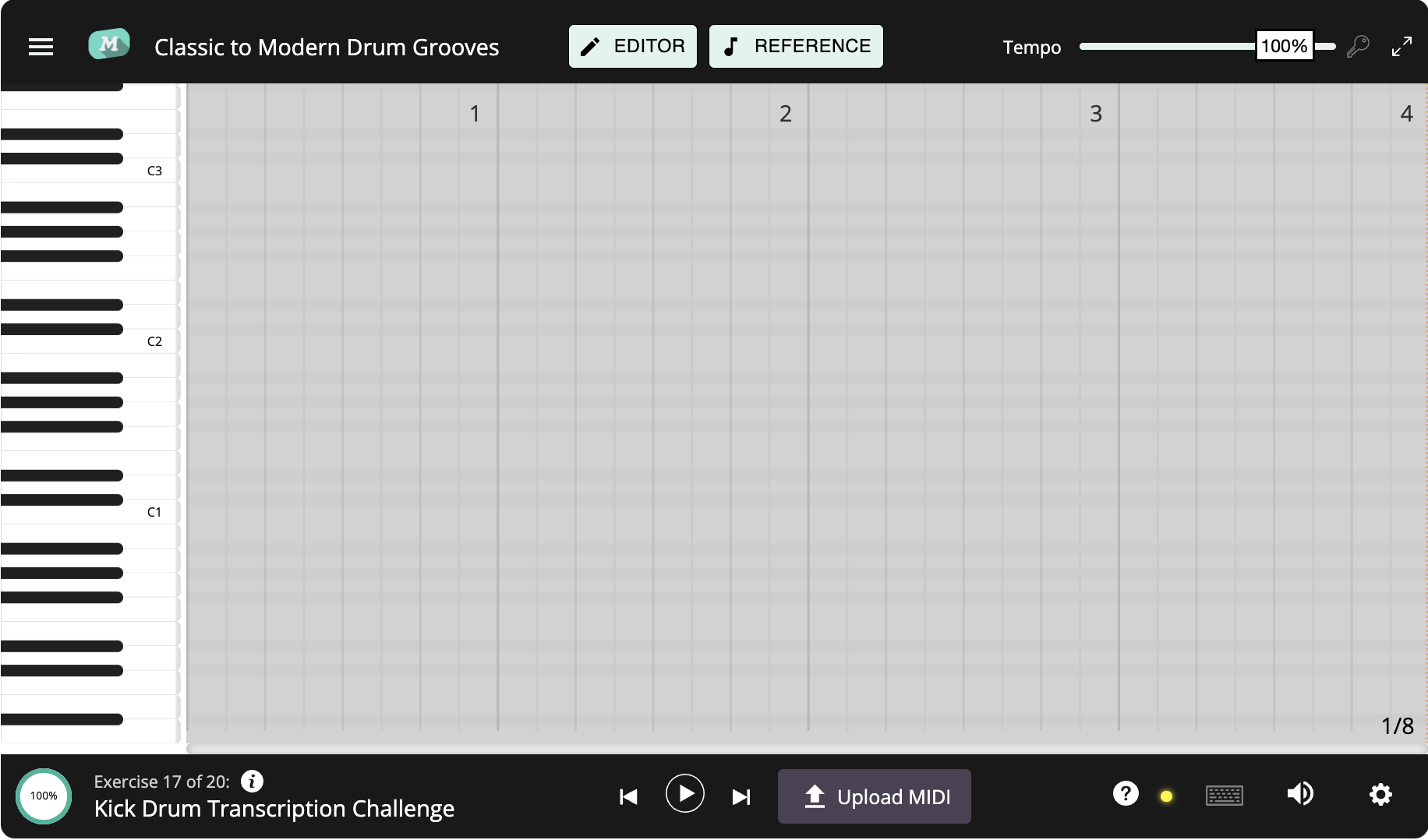Teaching Ear Training
 Updated
by Jack Keough
Updated
by Jack Keough
Immersive MIDI-Based Ear Training
One of the most important abilities as a musician is the deconstruction and translation of what you are hearing into a tangible form. When you are transcribing a a part of a song, you are typically immersed in all of the instruments of the mix, yet most ear training techniques are taught isolated on a piano. Our aim is to provide the options for students to hear a reference track of what they are transcribing, a backing track for immersion, and the student answer.
Transcribing with the MIDI Editor
When it comes to ear training, students need a medium to transcribe what they are hearing. Typically this is sheet music or an instrument. However, since DAWs are the most popular tool for creating music, we believe that the most critical place for music students to be familiar with these concepts is in the MIDI editor.
By providing a learning tool where students can develop their ears that is similar to where they will be creating music, we aim to bridge the gap between their education and creation.
Why is this tool helpful?
Students can create MIDI files to match audio playbacks, receiving feedback on correct, wrong, and missing notes.

In the example above, students are challenged to transcribe the kick drum pattern in the MIDI editor.
Different Exercises Using this Tool
- Have your students transcribe a Melody.
- Provide your students with a chord progression as an audio reference, and ask them to transcribe the outer voices.
- Provide your students with a chord progression in root position, and a reference that contains the same chords inverted in different ways and ask them to edit the chords to match those from the reference.
